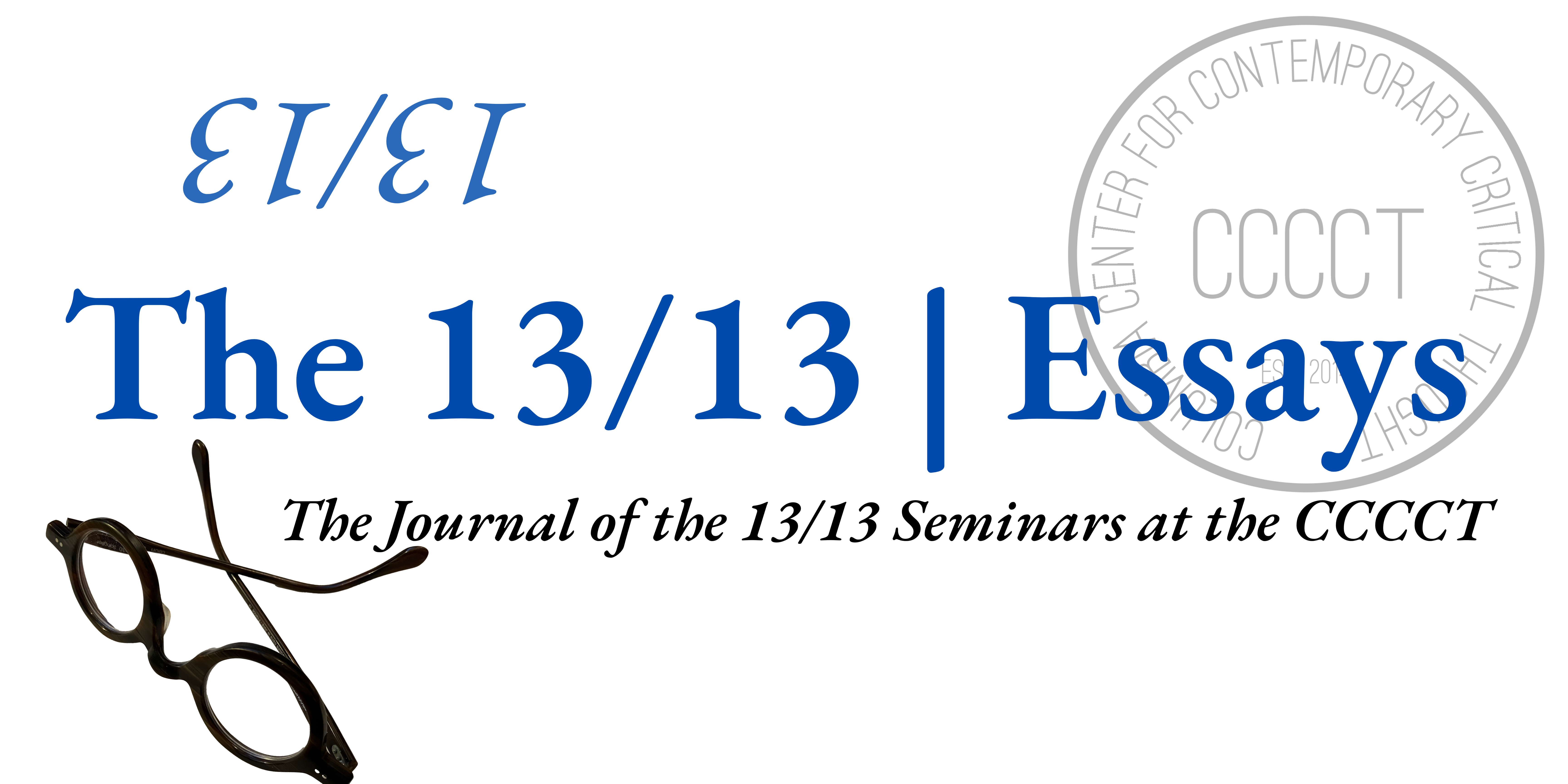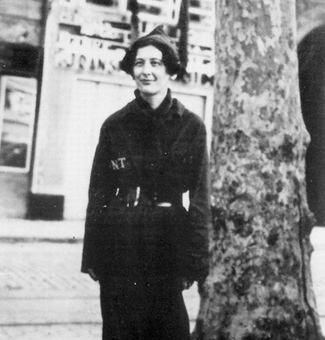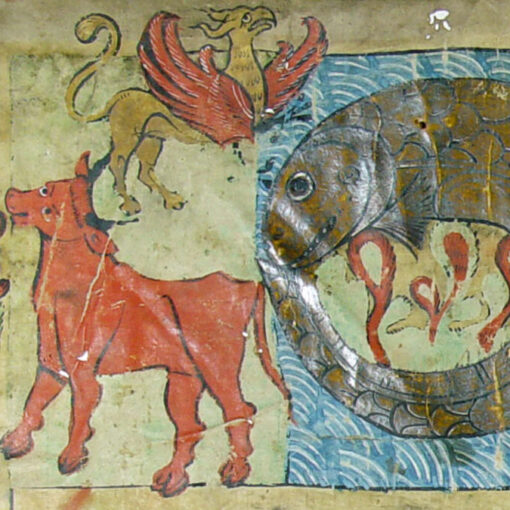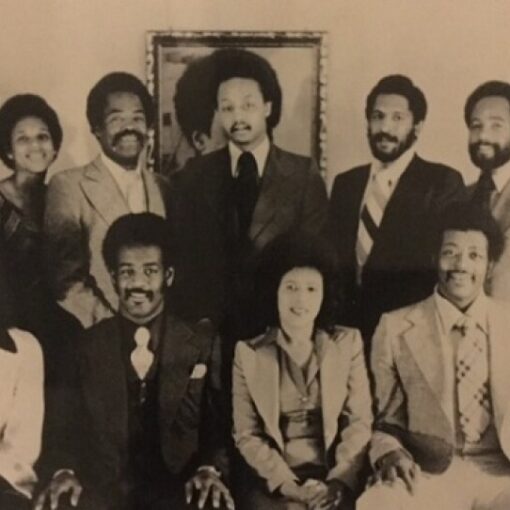
By Benjamin P. Davis
On a Monday morning in April 2015, a boat carrying Syrian and Eritrean migrants from Turkey crashed into the rocks off the shores of Rhodes, Greece. Within a few minutes, the boat disintegrated. “It was as if it was made of paper,” the Greek soldier Antonis Deligiorgis said.[1] Deligiorgis, who started that morning off-duty and simply set out for a coffee, would go on to personally bring 20 of the 93 migrants on that boat safely to shore, including one pregnant woman, and the image of the Greek soldier carrying the pregnant migrant landed on the front page of many leading world newspapers, among them The New York Times.
In the Anglophone media, competing interpretations of the story immediately emerged. While the headline in The Guardian praised “the Greek hero on the beach,” The Independent ran an article saying that the crash “showed the world how Europe had failed to deal with its migrant problem.”[2] In the U.S., the headline from The Atlantic plainly read “The Mediterranean Migrant Crisis.”[3]
The questions we raise of this “rescue” moment and its surrounding media coverage reveal something about how we theorize international relations today. Is the media’s focus on a wider “crisis” an example of missing the human drama of that April morning, or does it provide needed geopolitical context? Is the most pressing “problem” here “the migrant problem,” or should we shift our problematization to the categories and policies of the nation-state?
Further, is Deligiorgis indeed a “hero,” or would it be more accurate to say that the praising description of Deligiorgis’s “heroism” is itself symptomatic of a larger problem of agency, in that the lens of neoliberalism prevents us from seeing collective possibilities? More fundamentally, what are the human rights of the migrants? What are the duties of those on shore to respond to them? And how could our critical approach to the problems here also inform our practice?
Analyzing the media coverage of Deligiorgis’s actions in a 2015 lecture, the British cultural theorist Paul Gilroy wrote, “In a typical, individualizing gesture, the press presented Deligiorgis primarily as the saviour of Wegasi Nebiat, a pregnant 24-year-old Eritrean woman.”[4] But arguing that risking one’s life to save that of another is “not something to pass over casually”—and noting that upon the birth of her child Nebiat named him “Antonis” in honor of the soldier—Gilroy went on to suggest that Deligiorgis’s “bravery could have something to teach the rest of the EU about primal, humanitarian responsibility to and for others less fortunate than oneself.”[5]
Gilroy’s invocation here of an ethical obligation to others as a natural or “primal” part of human life cuts against the grain of much critical theory today. In “progressive” or “radical” circles, claims to essence and nature are avoided at all costs. Gilroy’s willingness to make such a foundationalist claim was part of why he earned the title, in a 2021 profile in The Guardian, “The last humanist.”[6]
Gilroy’s provocative point, offered through his reading of that April morning, was that hyper-critical theory, insofar as it remains withdrawn from our basic human concerns and nature, cannot effectively make a claim on political life as it is lived out by ordinary and increasingly creolized humans. This is what he calls “the problem of critique at sea level.”[7]
But emphasizing that he is not “against theory or verticality as such,” Gilroy also notes that “some time ago, I made a decision to resist the pressure to ascend to the altitude of theoretical sophistication.”[8] Instead, he sought to maintain a “lowly watery orientation.”[9]
What, concretely, does this orientation imply? How is it different from the theoretical abstraction he is arguing against?
After all, Gilroy’s lowly orientation does not proceed through plain-spoken language, avoiding the jargon of high theory. Instead, even this recent lecture reflecting on the state of critical theory is full of words such as “xenology,” “raciology,” and “hydrarchy.”[10]
If Gilroy talks about “primal” responsibility in near-Levinasian terms, foregrounding an ethical dimension of human life, that does not mean that he paints the rest of social life with a broadly essentialist brush. In his 2019 Holberg Lecture, “Never Again: refusing race and salvaging the human,” Gilroy says, “I think we should be sceptical about the seductions of the ontological turn recently promoted in the study of race politics.”[11]
In other words, while he highlights the “constitutive power” of racial systems, his lowly orientation also asks its readers to move away from “the political ontology of race” seen in Afropessimism as well as in different forms of identity politics.[12] He asks us instead to understand ourselves in normative or practical terms—how we respond to others day by day.
This attention to practice plays out through Gilroy’s concrete examples, which much theory fails to give in the first place. In the 2015 lecture where he coined the term “the problem of critique at sea level,” Gilroy’s concluding example was African and Middle Eastern migration to Europe, in general, and Deligiorgis’s rescue at sea, in particular. Through this example, he diagnosed a failed attempt to handle an “increasingly unruly world” via “ever more complex codes intelligible only to the initiated.”[13] He described those theories as “sophistry more than sophistication.”[14]
In sum, Gilroy’s call to attend to sea level raises a question for those of us invested in the 13/13 project: If critical theory is both reconstructive and practical, can it still be called critical theory?
Since “some time ago”—taking as exemplary Frederick Douglass and W. E. B. Du Bois in The Black Atlantic—Gilroy’s answer has been yes. My suggestion in this essay is that Gilroy outlines a renewed critical theory, one focused less on identity and more on practice, and thus one more able to speak to questions of sea level than much critical theory today.
***
On my reading, there are two important elements of a reconstructive critical theory that Gilroy outlines, but does not fully sketch, in that 2015 lecture. The first has to do with how stories of the world help us to understand the forces that cause climate migration. In other words, this is a question of how to theorize.
Gilroy cites C. L. R. James’s 1953 book Mariners, Renegades, and Castaways: The Story of Herman Melville and the World We Live In, observing that “James claimed that it had been Melville’s relationship to the sea and global commerce that enabled him to see the future of capitalism more clearly than any other writer of the period in which colonial rule was being formalized as imperial conceit.”[15] Even for the Marxist James, then, literary cultural production here was not merely superstructural and ideological; it was, rather, a crucial theoretical tool for understanding the present and our place in it. In James’s own words:
Melville is not the only representative writer of industrial civilization. He is the only one there is. In his great book the division and antagonisms and madnesses of an outworn civilization are mercilessly dissected and cast aside. Nature, technology, the community of men, science and knowledge, literature and ideas are fused into a new humanism, opening a vast expansion of human capacity and human achievement. Moby Dick will either be universally burnt or be universally known in every language as the first comprehensive statement in literature of the conditions and perspectives for the survival of Western civilization.[16]
Writing about shipping, Melville portrayed not just the insanity of a dying, “outworn civilization,” but also its creative potential as it articulates a “new humanism” that would be truly universal. Literature, then, could be one place of fruitful engagement for a renewed critical theory that speaks to sea level today.
The second element I would like to elaborate from Gilroy’s lecture emerges in his claim that “the creative re-enchantment of the human, implicitly proposed here in abstract terms, is already underway as part of convivial interaction in everyday, heterocultural life.”[17] This small sentence, highlighting its abstraction in a way that invites us to fill out the particulars, draws on Sylvia Wynter’s framing of a “re-enchantment of the human,” suggesting again the importance of super-structural elements (especially narrative) to a renewed critical theory.[18]
Further, by “convivial interaction” Gilroy is returning to his articulation of “conviviality” in his 2005 Postcolonial Melancholia, which was based on his 2002 Wellek Lectures in critical theory, “Elements of Post-colonial melancholia.” In the book he defined “conviviality” as “the processes of cohabitation and interaction that have made multiculture an ordinary feature of social life in Britain’s urban areas and in postcolonial cities elsewhere.”[19] And there he described one “virtue” of conviviality in that it “introduces a measure of distance from the pivotal term ‘identity,’” highlighting how convivial interactions feature “radical openness” instead of the “closed, fixed, and reified” proceedings of identity-based claims.[20] In that way, conviviality is part of Gilroy’s “unabashed humanism” (an echo of James and Césaire).[21] And in that way, theory turns our attention not to a radical break with the present, but to ordinary human interactions “already underway.”[22]
***
Like most good things in my academic life, my return to Gilroy was initiated by my colleague and friend (and scholar of international relations) Helen Kinsella, who texted me The Guardian’s 2021 profile of Gilroy right after it came out in August of that year. I was living in Toronto then, and after reading his profile, I decided to study all of his later books. I would get a cup of coffee, walk to the University of Toronto’s Robarts Library, and spend my days reading his work in chronological order. I had already read some of his earlier and more famous books, so then I devoured Against Race, Postcolonial Melancholia, and Darker than Blue.
Around that time, someone had spray-painted “Read more Plato” onto the glass of the bus stop directly outside Robarts. It looked like this:

While I did not make the connection then, as often happens, years later I can only now discern some resonance between my time reading Gilroy and that graffiti on the glass. For the two elements in Gilroy’s thought that I have briefly drawn out here regarding a renewed critical theory, the importance of literature and the importance of speaking to everyday life, can both be found in that most literary theorist of the everyday we have in the Western tradition, Plato.
It might seem strange that I would conclude my reflections about critique at sea level with Plato. After all, as Raphael famously represented in his School of Athens, isn’t it Plato, the metaphysician, who got us into all this trouble with abstraction in the first place, not Aristotle, the naturalist, who was trying to bring philosophy down to earth?
And that is correct—at the level of theory. But Gilroy’s example of rescuing migrants teaches us that critical theories are ultimately tested not on the page, but at sea.
After witnessing a jury condemn Socrates to death in 399 BCE, Plato went into what the intellectual historian James Miller describes as a kind of “inner exile.”[23] Around 397, Plato then made this inner state an outer reality, setting out to discover the best political arrangement. The resulting travel involved much time at sea, including seafaring to Africa to study mathematics, geometry, and theology.
It was only in the wake of his time in Africa and at sea that Plato gave us The Republic, where Socrates asks us to consider “which whole way of life would make living most worthwhile for each of us.”[24]
If Plato represents a pivotal moment in Western philosophy, departing from Socrates by writing down philosophical wisdom, Aristotle made a further break that influences where we are today. Gone is playwright’s attention to literary style. Now we have the naturalist’s systematic approach to the living world and the bibliophile’s extensive personal library and obsession with maps. But most importantly, with Aristotle we see a strong split between theory and practice.
Whereas Plato’s Socrates lived out his convictions to his death, Aristotle drove a wedge between critique and praxis in his personal service to Macedonia’s monarchy. While his own stated preference was for a constitutionally governed polity including elements of oligarchy and democracy, Aristotle served a monarchy that was also an expanding empire. If in his Ethics Aristotle said deeds matter more than words, “[b]y this criterion,” as Miller puts it, “most of what Aristotle says about the best possible polis in the Politics is mere words.”[25]
Aristotle, Miller goes on, “externalized the rational unity that Socrates had sought to realize through a harmony between conduct and core beliefs… his central public achievement was not the way he conducted his life but the systematic and dispassionate fashion in which he aimed to understand empirical reality.”[26] The implication, against Plato, is “that the acquisition of such knowledge requires neither a conversion of the soul in practice nor a crowning moment of divine revelation.”[27]
My concluding suggestion, then, is that Gilroy’s call for critical theory to attend to sea level is also a call for a return to the old sense of philosophy, in Pierre Hadot’s terms, “as a way of life.”[28]
It was not a coincidence that Chloe Howe Haralambous’s work has involved not just articles that attempt to understand empirical reality but also work at Sea Watch rescuing border-crossers.
“The sea is History,” the Saint Lucian poet Derek Walcott wrote.[29] The sea might also be, as Gilroy teaches, a needed corrective to re-orient critical theory toward questions of deeds, toward the question of a “whole way of life.”
To read more and watch the seminar “Rescue at Sea,” please go to Coöperism 11/13 here.
Notes
[1] Helena Smith, “Migrant boat crisis: the story of the Greek hero on the beach,” The Guardian, April 25, 2015, https://www.theguardian.com/world/2015/apr/25/migrant-boat-crisis-the-sergeant-who-did-his-duty-towards-people-struggling-for-their-lives.
[2] Ben Tufft, “Migrant crisis: Greek soldier saved 20 people singlehandedly off Rhodes beach,” April 26, 2015, https://www.independent.co.uk/news/world/europe/migrant-crisis-greek-soldier-saved-20-people-singlehandedly-off-rhodes-beach-10205175.html.
[3] Alan Taylor, “The Mediterranean Migrant Crisis: Risking Everything for a Chance at a Better Life,” The Atlantic, May 11, 2015, https://www.theatlantic.com/photo/2015/05/the-mediterranean-migrant-crisis-risking-everything-for-a-chance-at-a-better-life/392957/.
[4] Paul Gilroy, “‘Where every breeze speaks of courage and liberty’: Offshore Humanism and Maritime Xenology, or, Racism and the problem of Critique at Sea Level,” Antipode: A Radical Journal of Geography 50, no. 1 (2018): p. 17.
[5] Ibid., pp. 17, 18.
[6] Yohann Koshy, “The last humanist: how Paul Gilroy became the most vital guide to our age of crisis,” The Guardian, August 5 2021, https://www.theguardian.com/news/2021/aug/05/paul-gilroy-britain-scholar-race-humanism-vital-guide-age-of-crisis.
[7] Gilroy, “Where every breeze.”
[8] Ibid., p. 3.
[9] Ibid., p. 10.
[10] Ibid., pp. 3, 7, 4.
[11] Paul Gilroy, “Never Again: refusing race and salvaging the human,” https://holbergprisen.no/en/news/holberg-prize/2019-holberg-lecture-laureate-paul-gilroy.
[12] Ibid.
[13] Gilroy, “Where every breeze,” p. 4.
[14] Ibid., p. 3.
[15] Ibid., p. 6.
[16] Quoted in ibid., p. 7.
[17] Ibid., p. 19.
[18] See David Scott, “The Re-Enchantment of Humanism: An Interview with Sylvia Wynter,” Small Axe 8 (2000).
[19] Paul Gilroy, Postcolonial Melancholia (New York: Columbia University Press, 2005), p. xv.
[20] Ibid.
[21] Ibid.
[22] A line of twentieth-century French critical theory frames ethics as a radical break instead of as an everyday practice. This can be found in “the Other” in Emmanuel Levinas and Jacques Derrida, or in “the event” in Alain Badiou. Simone Weil also stressed a similar break in her mystical writings. In important texts in German critical theory, both Hegel’s deterministic, teleological Geist and Heidegger’s line that “only a god can save us” draw our focus away from ordinary (and contingent) actions and practices, a point Gilroy’s teacher Stuart Hall stressed in an interview with David Scott, “Politics, Contingency, Strategy.” While one approach to critical theory can look to other traditions for an alternative focus (hence Gilroy’s framing of the Black Atlantic as a “counterculture of modernity”), there are also myriad resources within French and German critical theory that point us to ordinary life. For instance, returning to Plato’s Alcibiades in particular but also to the figure of Socrates more broadly, in his late work Michel Foucault presented Socrates in ordinary terms: “He would greet people in the street or adolescents in the gymnasium with the question: Are you caring for yourself?” (Michel Foucault, Ethics: Subjectivity and Truth, trans. Robert Hurley et al. [New York: The New Press, 1997],p. 287).
[23] James Miller, Examined Lives: From Socrates to Nietzsche (New York: Farrar, Straus and Giroux, 2011), p. 49.
[24] See Plato, Republic, 344e. Thanks to Roosevelt Montás for returning my attention to this line.
[25] Miller, Examined Lives, p. 109.
[26] Ibid.
[27] Ibid., p. 111.
[28] See Pierre Hadot, Philosophy as a Way of Life: Spiritual Exercises from Socrates to Foucault, trans. Arnold Davidson (Malden, MA: Blackwell, 1995).
[29] Derek Walcott, “The Sea is History,” in Collected Poems 1948-1984 (New York: Farrar, Straus and Giroux, 1986), p. 364.




